80+ Sickening Cyberbullying Statistics
Here are over 80 cyberbullying statistics that can help you fully understand the situation.

The Cyberbullying Research Center defines cyberbullying as when someone repeatedly and intentionally harasses, makes fun of, or mistreats another person online, while using a mobile device, or while using an electronic device.
In a nutshell, cyberbullying is bullying that takes place online.
It doesn’t matter how, where, or through which device. Spreading rumors, sharing explicit photos without consent, and mean comments are all forms of cyberbullying. It can happen on forums, gaming spaces that allow users to share content, and social networking platforms.
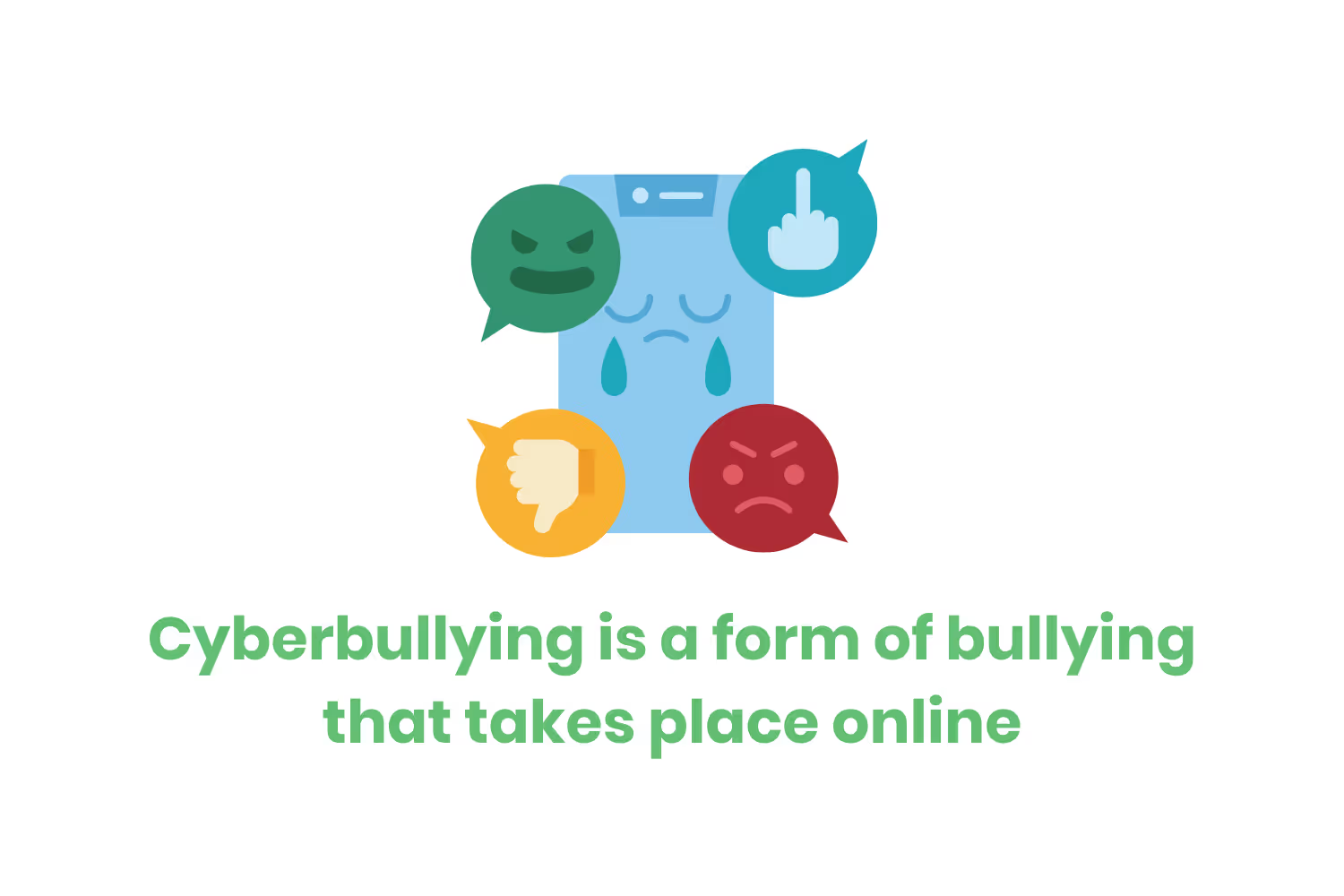
Online harassment is different from in-person harassment because it creates a permanent public record. After all, anything posted on the internet will always exist on the internet.
Cyberbullying creates a kind of permanent online record that can affect someone’s online reputation. Not only can it affect the reputation of the person subjected to the harassment, but it can also affect the reputation of the harasser.
Unfortunately, cyberbullying is hard to notice. Teachers, parents and coworkers cannot actively overhear or see this form of bullying. They can’t actively intervene at the moment when the harassment takes place and often only address the situation in the aftermath of the incident. It can also be harder to recognize since there is more room to interpret online tone and intent.

Due to the detrimental effect of online harassment and the difficulties in addressing this form of bullying, it’s important to understand all sides of the situation. Here are over 80 cyberbullying statistics that can help you fully understand the situation.
General Statistics
As mentioned above, cyberbullying involves repeated and intentional harassment, mistreatment, or mockery of another person online.
The online component is key in distinguishing cyberbullying from other forms of harassment. Therefore, the perpetrators need to have an online presence.
To fully understand the extent of cyberbullying, you need to understand how many teenagers are online. Better yet, understanding how often teenagers interact with social media platforms can give you insight into how cyberbullying occurs.
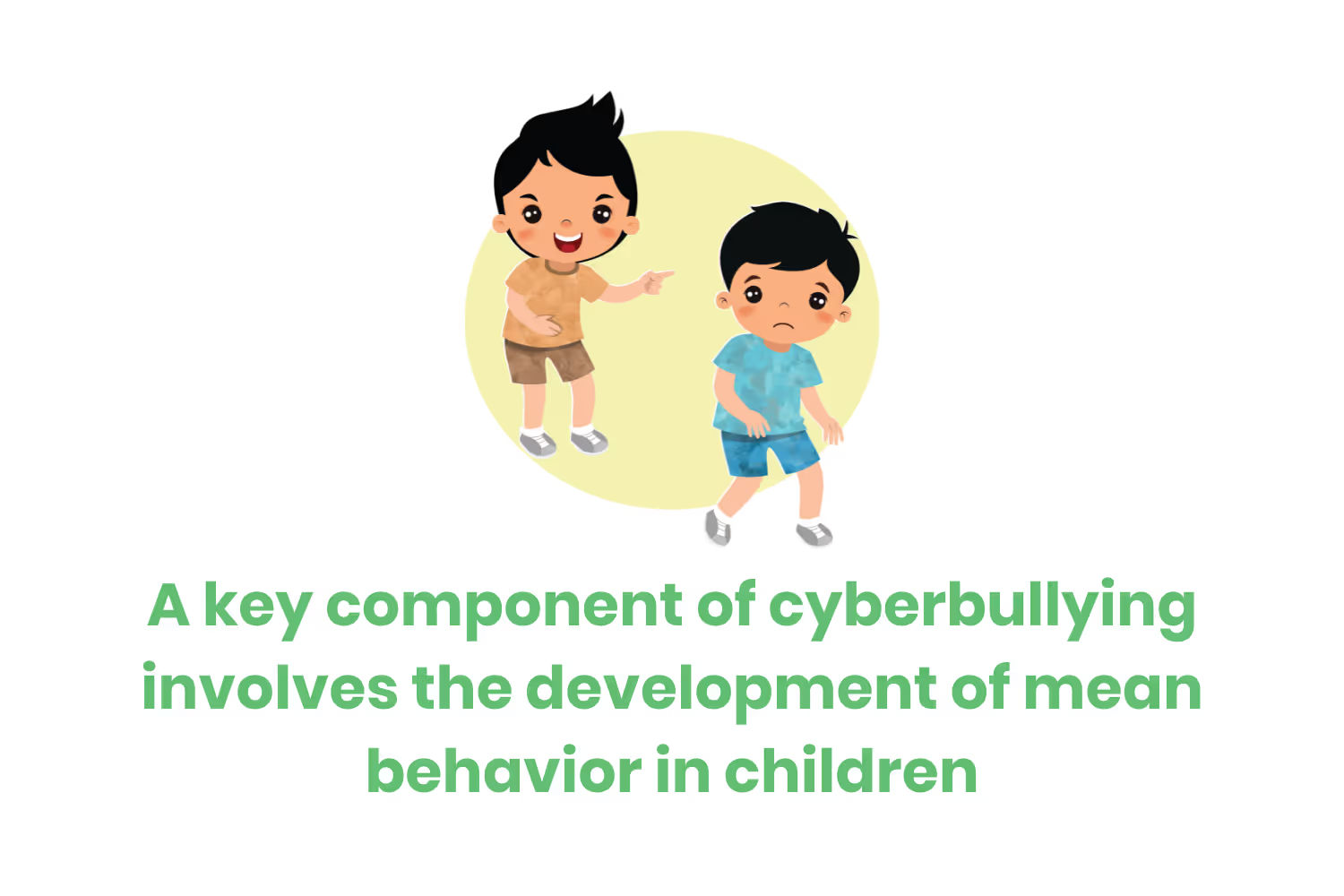
Another key component of cyberbullying involves the development of mean behavior. Understanding how meanness develops in children can provide insight into how people can perpetrate cyberbullying.
- 95% of teenagers in the United States have some sort of online presence. (Cyberbullying: Identification, Prevention, & Response)
- The majority of teenagers access the internet on a mobile device.
- 75% of teenagers use social media at least once a day. (2017 Ditch the Label Report)
- 90% of teenagers believe online harassment is a problem for their age group. (Pew Research Center)
- 63% believe online harassment to be a major problem.
- Mean behavior increases as students age. (Cyberbullying: Dealing with Online Meanness, Cruelty, and Threats)
- Reports show that 6% of Grade 4 students, 31% of grade 8 students, and 38% of Grade 11 students exhibit mean behavior.
Types of Cyberbullying
Like any type of harassment, there are many ways to harass someone.
Cyberbullying does not involve shoving students into lockers, knocking belongings out of someone’s arms, or forcing someone’s head in the toilet. These are common bullying scenes in movies, and they do sometimes happen in real life, but it’s not what happens online.

According to the Pew Research Center, there are six main forms of online bullying…
- Offensive name-calling
- Spreading false rumors
- Receiving explicit images that the recipient didn’t ask for
- Constant asking of where someone is, what they are doing, and who they are with by someone other than a parent
- Physical threats
- Having explicit images shared without the permission of the person in the photos
Some of these types of bullying occur more often than others. If adults become aware of the different types, they can become better prepared to help handle these situations.
- Offensive name-calling is the most common form of cyberbullying. (Pew Research Center)
- 42% of U.S teens report that they experience offensive name-calling online.
- 39% of teenagers experienced a nasty comment posted to their profile. (2017 Ditch the Label Report)
- Similarly, 34% had a nasty comment posted on their photo.
- About one-fifth of teenagers in the U.S experience peers who incessantly demand to know where they are, who they are with, or what they are doing. (Pew Research Center)
- 68% of teenagers experienced a mean or cruel private message at some point. (2017 Ditch the Label Report)
- 32% of US teens report that they experience the spreading of false rumors online. (Pew Research Center)
- 24.9% of students report experiencing mean or hurtful online comments in the previous month. (2019 Cyberbullying Data)
- During the same timeframe, 22.2% of students report experiencing rumors spread online
- 41% of teenagers said that someone posted rumors about them online at some point. (2017 Ditch the Label Report)
- 16% of teenagers report being the target of physical threats online. (Pew Research Center)
Experiences of Cyberbullying
Since there are different forms of online harassment, it’s only natural that children have a variety of experiences with cyberbullying.
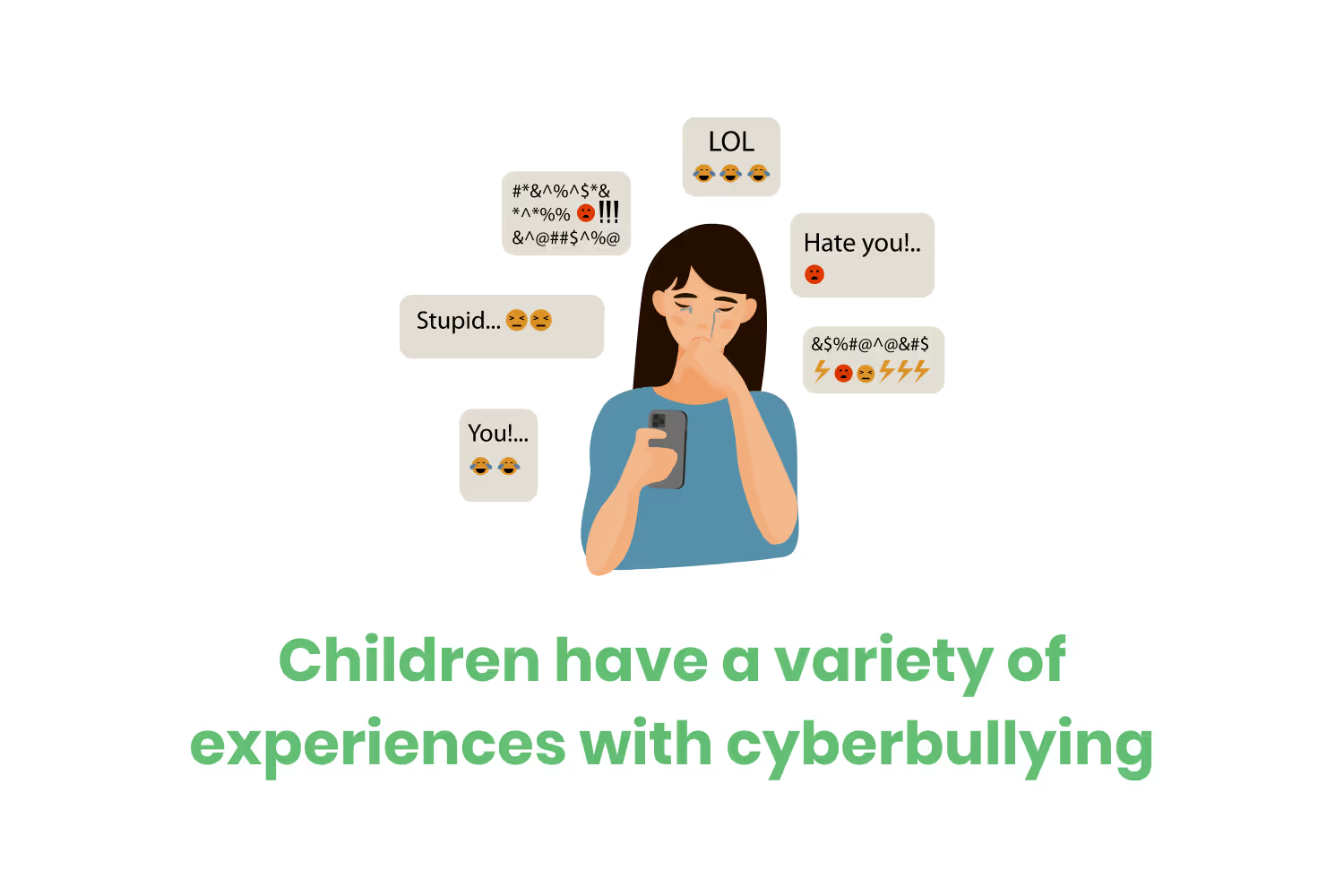
Many factors come into play when evaluating how often cyberbullying occurs. The recipient needs to acknowledge that the online behavior and comments constitute cyberbullying. Otherwise, their experiences will not count in the cyberbullying statistics below. Even so, the evidence below will have some sort of margin of error due to memory recall error.
Additionally, the bullied person needs to muster up the courage to admit they received harassment online. If they say nothing when taking questionnaires, the cyberbullying statistics like the ones below will end up lower than what actually goes on.
- 43% of teenagers have endured cyberbullying in 2019. (National Crime Prevention Council)
- 16% of teenagers reported that they experience cyberbullying at least once a week. (2017 Ditch the Label Report)
- An additional 29% say they experience it at least once a month.
- 37% of the students report experiencing cyberbullying in their lifetimes, according to a 2019 study. (2019 Cyberbullying Data)
- The study involved 4,972 students ages 12 to 17 in the United States.
- 24% of teenagers from a household earning less than $30,000 a year say they experience physical threats online. (Pew Research Center)
- In comparison, 12% of teenagers from a household earning $75,000 or more say the same.
- 8% of students say that cyberbullying is sometimes a problem for them. (Cyberbullying: Dealing with Online Meanness, Cruelty, and Threats)
- 3% of students say that cyberbullying is often a problem.
- Younger students and girls are more likely to report cyberbullying as an issue.
- 25% of U.S. teenagers report that they received an explicit image they did not request. (Pew Research Center)
- Additionally, 7% of U.S. teenagers admit that someone shared an explicit picture of them without consent.
Perpetrating Cyberbullying
If people experience harassment online, then someone’s intentionally posting or sharing content to hurt the victim.
There are several places online where students perpetuate online abuse. Social media might be one of the first places you think of when picturing how cyberbullying occurs. After all, rumors, images, and mean comments are often published on sites like Facebook, Messenger, and Snapchat.
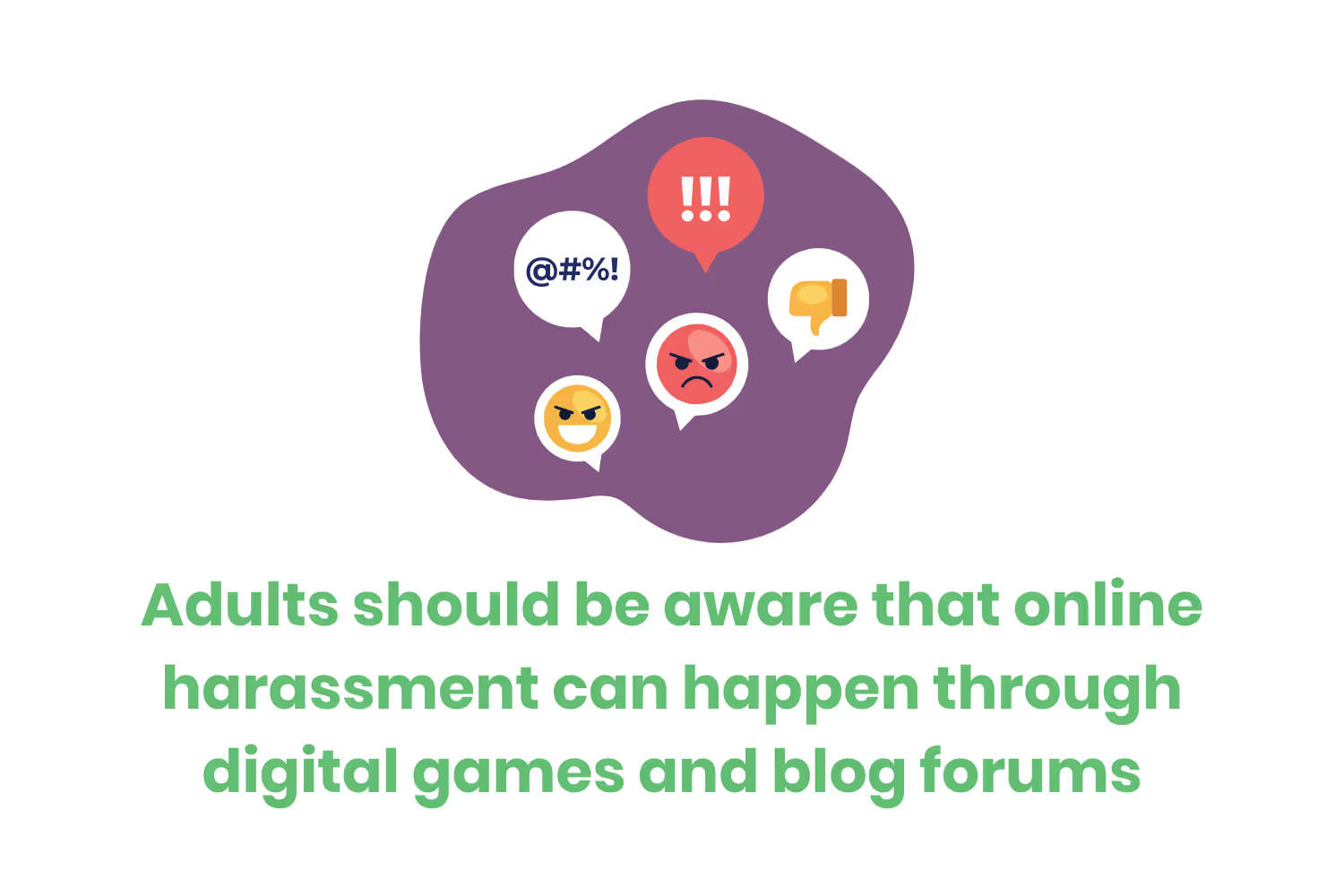
Adults should also understand that online harassment can happen outside of social media. For example, it often occurs through digital games and blog forums.
When this happens, many students are actively aware that their actions are mean or cruel. This admission confirms that the cyberbullying was intentional.
On the other hand, many students try to validate their behavior. Some students attempt to excuse their actions by attributing the behavior to “joking around”. Any form of cyberbullying for whatever reason is unacceptable and inexcusable.
However it may happen, actively bullying people online is not appropriate.
- 55% of students who participate in mean or cruel online behavior attribute their actions to them “just joking around”. (Cyberbullying: Dealing with Online Meanness, Cruelty, and Threats)
- 81% of children say that other people bully online because they think it is funny. (National Crime Prevention Council)
- 23% of students report doing something mean or cruel to an individual online. (Cyberbullying: Dealing with Online Meanness, Cruelty, and Threats)
- 15% of the over 4000 surveyed students admit to cyberbullying another person at some point in their life. (2019 Cyberbullying Data)
- The most common type of cyberbullying reported involved posting mean comments online.
- 6% of students report that they harassed an individual in an online game. (Cyberbullying: Dealing with Online Meanness, Cruelty, and Threats)
- 5% report they spread rumors.
- 4% report they once posted an embarrassing photo or video of someone to cause harm.
- This is more often done by girls than boys
- 3% said they, at one point, cyberbullied someone because of their race, religion, or their ethnicity.
- 1% of students report that they harassed someone sexually. (Cyberbullying: Dealing with Online Meanness, Cruelty, and Threats)
- This includes saying something or doing something sexual when the recipient did not want the comments or action.
Cyberbullying by Motive
A wise person once said, “perception is reality.”
Ditch the Label, an anti-bullying organization in the United Kingdom, conducted a study in 2017 to understand the pervasiveness of bullying and cyberbullying. Over 10,000 people between the ages of 12 and 20 participated in the survey.
These students and young adults came from all over the UK, as you can see in the image below.

During the survey, students who reported experiencing bullying in the last year answered the question, “Why do you think you were a target for bullying?”
- 50% believe it was because of the student’s appearance
- 40% thought it was because of interests or hobbies
- 19% had a suspicion it was because of their high grades
- 14% thought it was because of their household income
- 14% believe it was because of their low grades
- 11% believe they were targets because of their perceived masculinity or femininity
- 8% thought it was because of their disability
Social Media and Online Harassment
As you can see from the cyberbullying statistics above, online harassment occurs in a variety of places. Even so, social media still plays a big role.
Some social media platforms are more prone to cyberbullying than others. The popularity of the platform can play a role, but oftentimes it doesn’t.
Using the same Ditch the Label Report as the statistics above, below are some more facts about where on social media cyberbullying occurs.

- 71% of British students do not believe social media networks take enough action to prevent cyberbullying.
- Facebook has one of the worst usages to bullying ratios among social media platforms.
- 60% of young individuals, ages 12 to 20, use the platform
- 37% of the individuals experience cyberbullying.
- The highest percentage of adolescents experience cyberbullying on Instagram.
- 42% of people ages 12 to 20 reported that they experienced cyberbullying on Instagram.
Cyberbullying by Gender
Many of our middle school experiences look like this: the boys ate their lunches at one table and the girls ate theirs at a different table. Looking back, this was most likely because the two groups had different hobbies, interests, and after-school activities.
With this in mind, it makes sense that social interactions between girls are different than that between boys. Dolls, swings, baseballs, and bugs are all examples of items that distinguish social interactions during recess. Similarly, negative interactions can also vary between genders.

The topics used to insult a female peer are usually different from those used to insult males.
Understanding how cyber bullying differs between genders can help adults understand how to comfort the victim. Awareness of the impact can also help adults undo the emotional damage caused by the bullying.
- 38.7% of adolescent girls report experiencing cyberbullying in their lifetimes. (2019 Cyberbullying Data)
- In comparison, only 34.5% of adolescent boys report the same.
- 42% of girls and 41% of boys say they experienced offensive name-calling online. (Pew Research Center)
- 39% of girls and 26% of boys say they experienced someone spreading false rumors about them online.
- 16.2% of adolescent boys report cyberbullying others at least once in their lifetime. (2019 Cyberbullying Data)
- In comparison, only 13.4% of adolescent girls report the same.
- Boys are more likely to harass someone within an online game chat. (Cyberbullying: Dealing with Online Meanness, Cruelty, and Threats)
- They are also more likely to make fun of someone due to their ethnicity, sexual orientation, religion, or race.
- 64% of boys use the “just joking around” excuse as a means to justify their mean or cruel online behavior. (Cyberbullying: Dealing with Online Meanness, Cruelty, and Threats)
- In comparison, only 45% of girls use this excuse.
Cyberbullying in The Workplace
The majority of the statistics I’ve provided you with so far are specific to students in school. Why? Well, kids are more susceptible to cyberbullying because of the online landscape that they’re growing up in.
But online harassment isn’t just a teenage issue. It can extend to the workplace…it’s just not covered as much.
In fact, there have been entire court cases and rulings due to instances of online bullying from coworkers.
- 80% of people experienced cyberbullying in the workplace within the last 6 months (University of Sheffield and University of Nottingham)
- 20% of employees say that they experience cyberbullying on a weekly basis. (ACAS)
- There is a link between increased stress, reduced mental and physical well-being, emotional problems, reduced job satisfaction and decreased performance and workplace cyberbullying (Computers in Human Behavior)
- 61% of cyberbullied employees said that their employer didn’t respond to their report. (Workplace Bullying Institute)
- 50% of employees report experiencing or witnessing mistreatment during online meetings. (Workplace Bullying Institute)
- Most workplace cyberbullying happens via virtual meetings. (Purdue University)
Impacts of Cyberbullying
It’s common knowledge at this point that bullying can negatively affect someone’s mental health.
It negatively impacts self-esteem, increases feelings of depression, and instigates eating disorders.
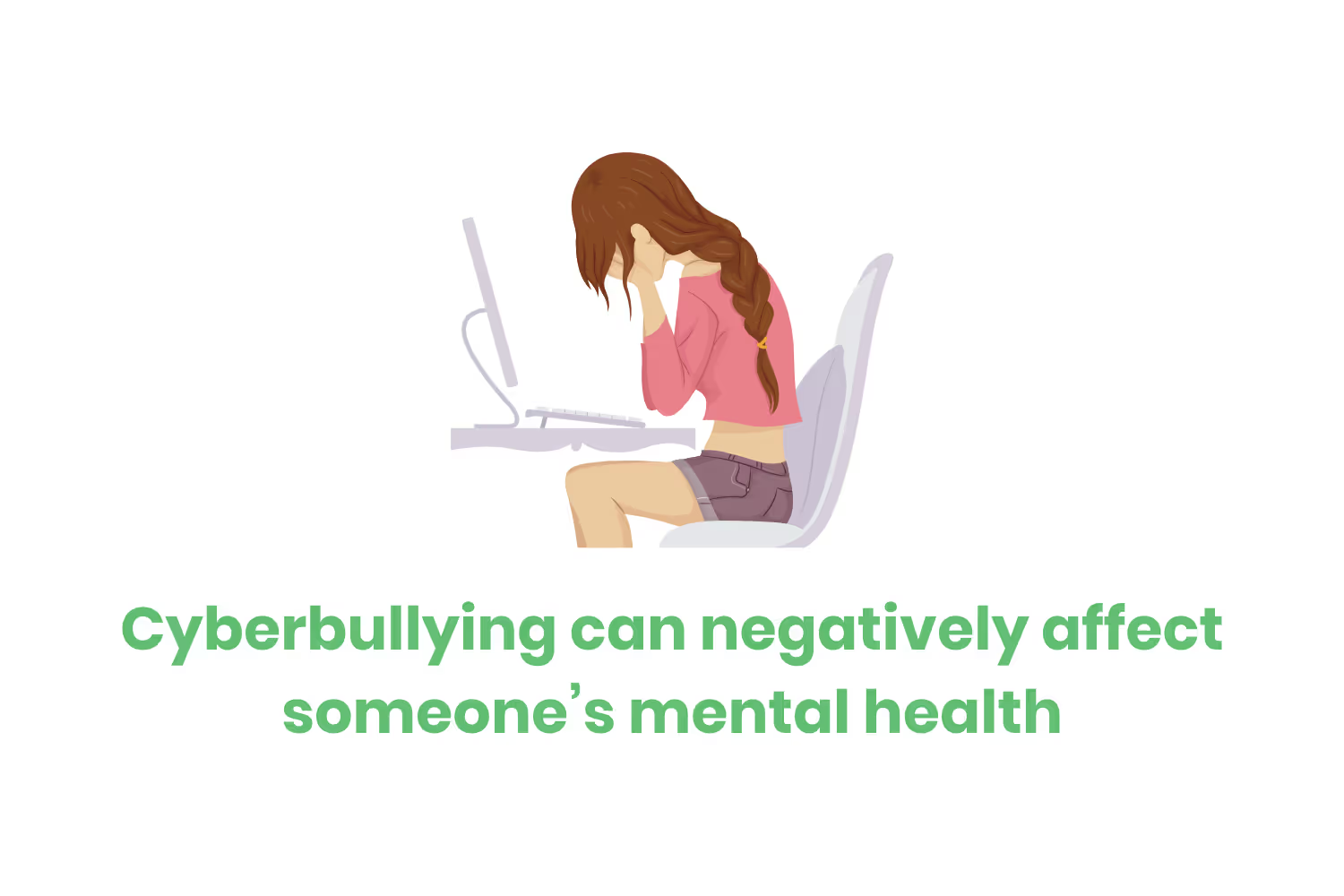
Cyberbullying is just as bad, if not worse. The statistics below shed light on the ugly truth…
- 41% of teenagers developed an anxiety disorder because of cyberbullying within the last year. (2017 Ditch the Label Report)
- 37% developed depression
- 26% experienced suicidal thoughts
- 25% self-harmed
- 14% developed eating disorders
- 9% abused drugs and/or alcohol
- Children who experience cyberbullying are at greater risk of suicidal behaviors compared to nonvictims. (Journal of Medical Internet Research)
- Victims are also at greater risk of self-harm.
- Roughly 30% of teenagers wanted to seek revenge on those who cyberbullied them in 2019. (National Crime Prevention Council)
- 41% of teenagers describe online harassment as having a high or extreme impact on their self-esteem. (2017 Ditch the Label Report)
Addressing Online Harassment
The majority of students and young adults have a negative perception of how the adults in their lives go about addressing cyberbullying.
Some believe that the policies are ineffective and are simply for show. Others believe that the situation isn’t taken as seriously as it should be, and they become frustrated.
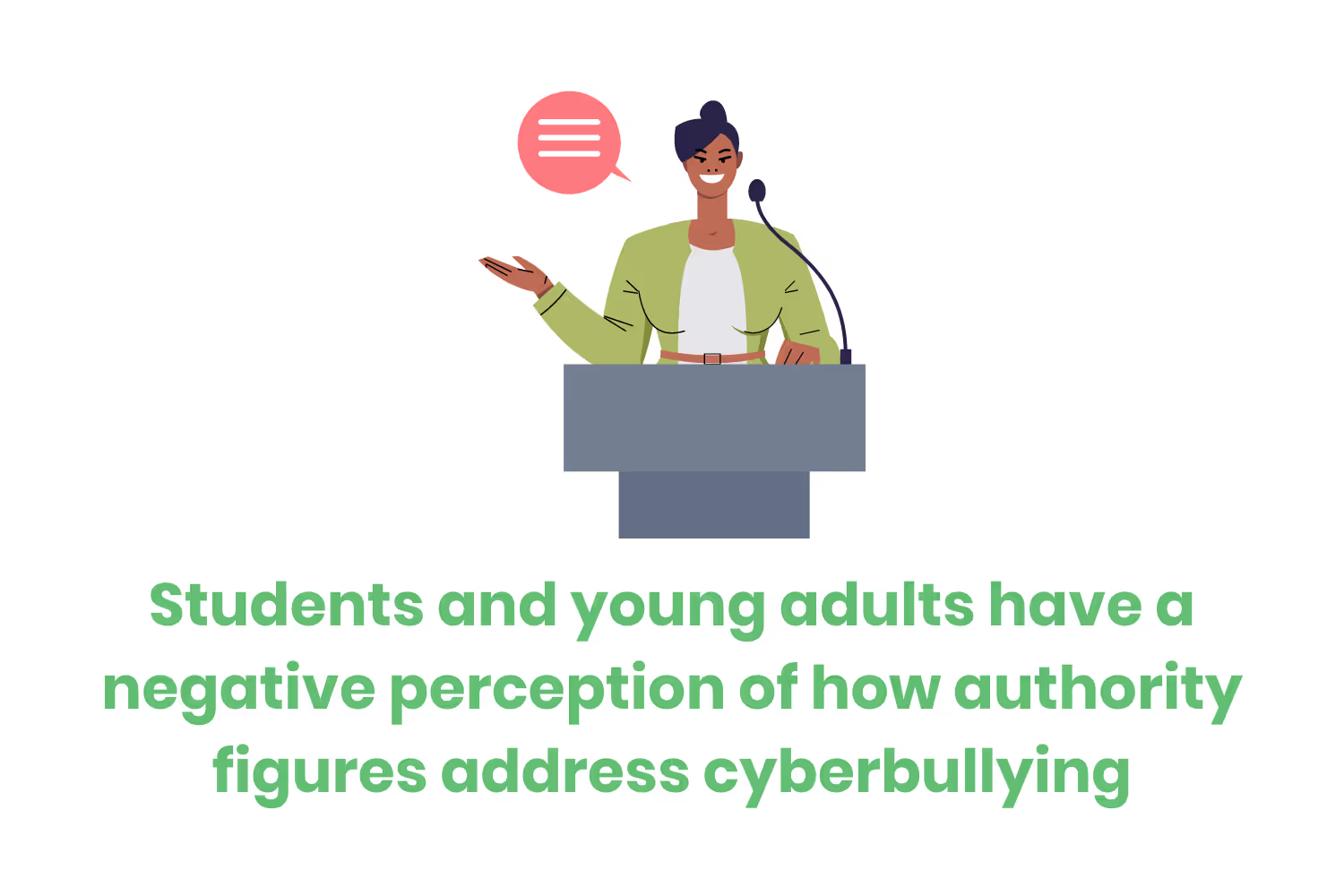
The statistics below highlight the opinions young adults have regarding cyberbullying prevention and mitigation efforts...
- The majority of students believe that teachers, social media companies, and politicians are failing to address cyberbullying. (Pew Research Center)
- 79% of teenagers believe elected officials are doing a poor job of addressing the problem.
- 66% of American teenagers believe social media companies are doing a poor job addressing the problem. (Pew Research Center)
- 19% of bullying victims turned to social media to address the cyberbullying behavior. (2017 Ditch the Label Report)
- 58% of teenagers believe teachers are doing a poor job of addressing cyberbullying. (Pew Research Center)
- 90% of teenagers reported the harassment to a teacher. (2017 Ditch the Label Report)
- 59% of teenagers view parents as doing a good job addressing online harassment and online bullying. (Pew Research Center)
- 90% of teenagers reported the harassment to a family member. (2017 Ditch the Label Report)
- Only 11% of teenagers talked with their parents about cyberbullying experiments in 2019. (National Crime Prevention Council)
Conclusion
As more people become active on social media and digital forums, online harassment and hate increase.
Just like in-person harassment, cyberbullying can have a severe detrimental effect on the victim’s emotional and mental health.
Now that you’re more aware of the scenario that exists, you’re better prepared to address cyberbullying. There is only one problem… unless someone tells you about their negative experiences online, how do you know it’s happening to the people around you?
Luckily, indicators exist that help determine if someone is experiencing cyberbullying. Classic signs include…
- Stops using their mobile device, seemingly out of nowhere
- Appearing nervous or jumpy when using electronic devices
- Showing signs of anger, depression, or frustration after using a mobile device, computer, or gaming system
- Abnormal withdrawn behavior
- Showing uneasiness when out of the house
- Avoiding discussions about online activities
Just like in-person bullying, if you see some of the signs above indicating someone is experiencing cyberbullying, you should say something.
If a child, friend or coworker is acting in a manner inconsistent with their normal behavior when handling electronic devices, find out why. Discussing matters like these is one of the best preventative measures you can take to end cyberbullying.
Emphasize your product's unique features or benefits to differentiate it from competitors
In nec dictum adipiscing pharetra enim etiam scelerisque dolor purus ipsum egestas cursus vulputate arcu egestas ut eu sed mollis consectetur mattis pharetra curabitur et maecenas in mattis fames consectetur ipsum quis risus mauris aliquam ornare nisl purus at ipsum nulla accumsan consectetur vestibulum suspendisse aliquam condimentum scelerisque lacinia pellentesque vestibulum condimentum turpis ligula pharetra dictum sapien facilisis sapien at sagittis et cursus congue.
- Pharetra curabitur et maecenas in mattis fames consectetur ipsum quis risus.
- Justo urna nisi auctor consequat consectetur dolor lectus blandit.
- Eget egestas volutpat lacinia vestibulum vitae mattis hendrerit.
- Ornare elit odio tellus orci bibendum dictum id sem congue enim amet diam.
Incorporate statistics or specific numbers to highlight the effectiveness or popularity of your offering
Convallis pellentesque ullamcorper sapien sed tristique fermentum proin amet quam tincidunt feugiat vitae neque quisque odio ut pellentesque ac mauris eget lectus. Pretium arcu turpis lacus sapien sit at eu sapien duis magna nunc nibh nam non ut nibh ultrices ultrices elementum egestas enim nisl sed cursus pellentesque sit dignissim enim euismod sit et convallis sed pelis viverra quam at nisl sit pharetra enim nisl nec vestibulum posuere in volutpat sed blandit neque risus.

Use time-sensitive language to encourage immediate action, such as "Limited Time Offer
Feugiat vitae neque quisque odio ut pellentesque ac mauris eget lectus. Pretium arcu turpis lacus sapien sit at eu sapien duis magna nunc nibh nam non ut nibh ultrices ultrices elementum egestas enim nisl sed cursus pellentesque sit dignissim enim euismod sit et convallis sed pelis viverra quam at nisl sit pharetra enim nisl nec vestibulum posuere in volutpat sed blandit neque risus.
- Pharetra curabitur et maecenas in mattis fames consectetur ipsum quis risus.
- Justo urna nisi auctor consequat consectetur dolor lectus blandit.
- Eget egestas volutpat lacinia vestibulum vitae mattis hendrerit.
- Ornare elit odio tellus orci bibendum dictum id sem congue enim amet diam.
Address customer pain points directly by showing how your product solves their problems
Feugiat vitae neque quisque odio ut pellentesque ac mauris eget lectus. Pretium arcu turpis lacus sapien sit at eu sapien duis magna nunc nibh nam non ut nibh ultrices ultrices elementum egestas enim nisl sed cursus pellentesque sit dignissim enim euismod sit et convallis sed pelis viverra quam at nisl sit pharetra enim nisl nec vestibulum posuere in volutpat sed blandit neque risus.
Vel etiam vel amet aenean eget in habitasse nunc duis tellus sem turpis risus aliquam ac volutpat tellus eu faucibus ullamcorper.
Tailor titles to your ideal customer segment using phrases like "Designed for Busy Professionals
Sed pretium id nibh id sit felis vitae volutpat volutpat adipiscing at sodales neque lectus mi phasellus commodo at elit suspendisse ornare faucibus lectus purus viverra in nec aliquet commodo et sed sed nisi tempor mi pellentesque arcu viverra pretium duis enim vulputate dignissim etiam ultrices vitae neque urna proin nibh diam turpis augue lacus.




